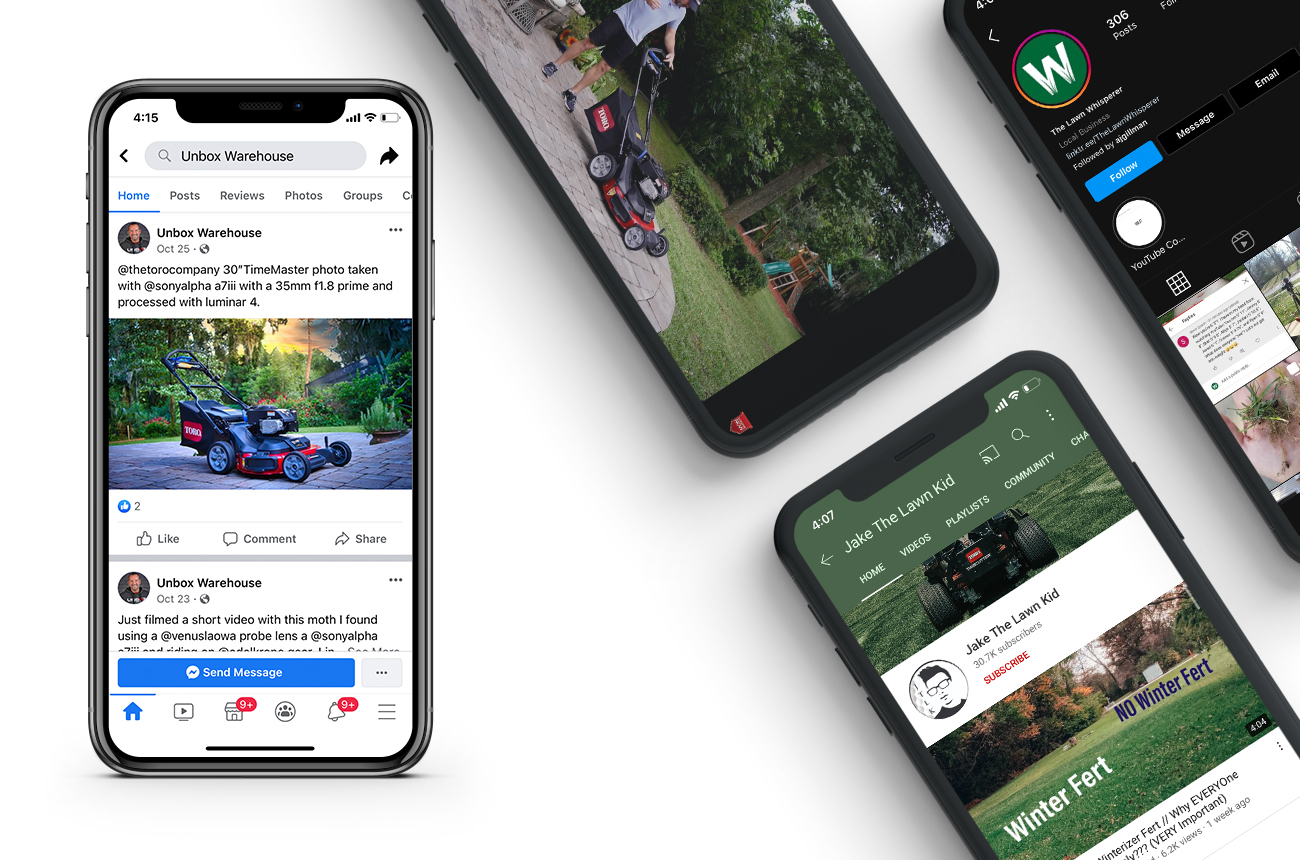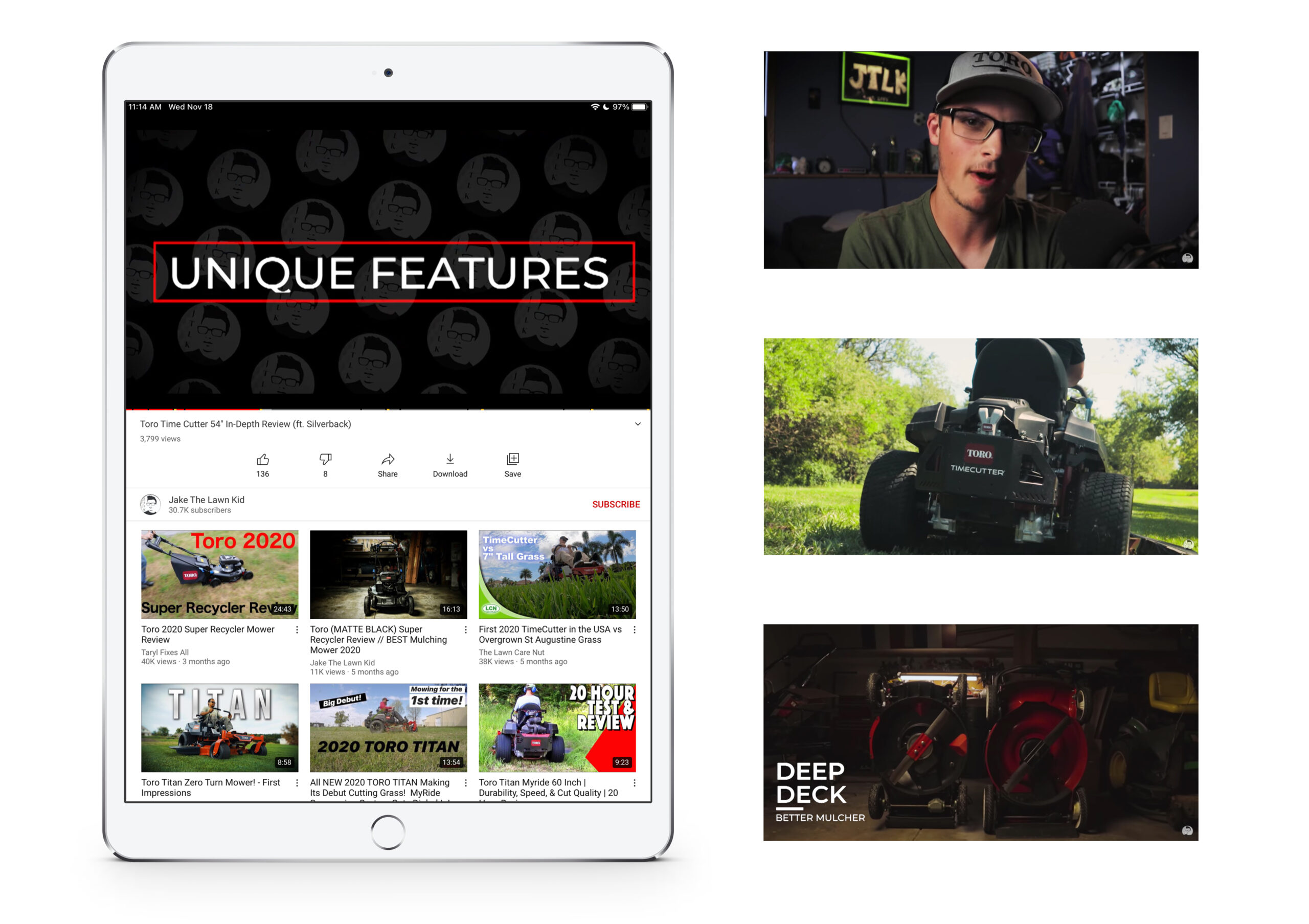Is influencer marketing worth the investment?
November 23, 2020 // Public Relations
Influencers give your brand a power that is unmatched. Their broad reach, authentic voice, and loyal followings create a combination that’s nearly impossible to replicate. As with any new marketing tactic, though, you have to look at the time you spend versus the return it provides to decide if it’s a good fit. We’ll walk you through additional considerations to help shape that decision.
What is an influencer?
Let’s start here. What is an influencer, exactly? We define an influencer as an individual who creates content on a topic we want to explore. They may review beauty products on Instagram, lawn care tools on YouTube, or anything and everything in between. The good news? There’s an influencer for nearly every industry across both B2B and B2C segments.
The Anthologic approach
Different approaches to influencer efforts yield different results. Our approach is to create opportunities for influencers to work our clients’ products into their content. Oftentimes, this will be in exchange for a free unit. If we want to get Kim Kardashian to use a client product, we can do that (most likely for a hefty fee) and it can certainly increase brand awareness, but we tend to focus our efforts lower in the marketing funnel in the consideration and conversion phases.
Our goal is to curate a bank of content with robust messaging validating our clients’ products. Once customers who are already aware of our product come across this content, it will push them to make a conversion, or purchase — if we’ve done our job correctly!
You’re probably thinking “That sounds great, but how do I get there?”

Influencer marketing provides added touchpoints with your desired audiences, ultimately driving consideration and conversions.
1. Planning and outreach activities come first. This phase is centered around determining the milestones for success before you begin. For example, will total video views be the primary KPI? Maybe the goal is to have a high number of individual pieces of content to leverage on owned properties. Is one platform more important than another? These are all questions that should be answered before anything else.
2. Next, identify influencers. We work to find individuals that we believe might be able to carry forward our goals through their content. Finding the right influencers for your brand means putting yourself in your target audience’s shoes. Immerse yourself in the industry content and you’ll be surprised at how easily you see key players emerge.
3. Reach out, build a relationship, and form a partnership. Figure out what needs to be done to make the partnership a win-win for both the influencer and the brand. Note that finding the elusive “win-win” won’t be the same with each influencer you work with. It may be as simple as sending product in exchange for content, but depending on the industry and influencer popularity, it might also involve payment.
4. It’s time to create content. Once we’ve built that relationship and negotiated terms, we’re ready to create the content. This next step is important; we want to make sure our content creator partners have creative freedom to keep their content authentic and resonating with their audiences.
We tend to take a hands-off approach when working with content creators for them to naturally work through their own creative processes. We may provide some talking points to give the creator some foundational information to cover, but ultimately, we believe the magic of influencer marketing is when we get authentic validation from the influencer and they share that with their subscribers and followers.
5. Wrap it up with tracking and reporting. This is where we meticulously comb through their content, and track it in a living spreadsheet that allows us to pull stats any time outside of the weekly and monthly reporting. To wrap up the project, we evaluate the numbers compared to initial goals to determine the success.
The fundamentals of influencer marketing closely parallel those of traditional public relations efforts. For example, through PR pitching and media relations activities, we’re actively seeking out opportunities for our clients’ products to be integrated organically into articles. With an influencer campaign, we’re also trying to work in mentions of products organically into YouTube (or other social media) content.
As the media consumption behaviors of consumers continue to change, we believe influencers are an evolution of the traditional PR discipline. There will always be a strong case for engaging publications and media outlets through PR and media relations efforts. That said, influencer marketing is an adjacent strategy that follows a similar blueprint to media relations activities.
Our best tip
The most important piece of advice we can give to anyone starting an influencer campaign is to surrender control. The reason you partner with influencers in the first place is to harness their unique voice. Let them connect with their audiences in the way they know how and the way they do best. That means resisting the urge to art direct and leave creative license in their hands, which admittedly can be tough for us as marketers. You’ve done the hard work vetting these content creators, you’ve reviewed their complete body of work and analyzed any risk, and ultimately, you’ve identified them as a partner.
It’s OK that they don’t use the registered trademarks when referencing your products. They might mention the wrong horsepower in their video. They might even point out a few downfalls of your product to keep it authentic for their audiences. Don’t worry. The benefits far outweigh the potential negatives.

Toro partnered with influencers in the residential and landscape industry to garner candid reviews of its mower and snowblower lines.
Is it worth the investment?
Yes. From all the work we’ve done, it’s a resounding yes. There are influencers at every level of the marketing funnel that can help validate marketing efforts across the board. By working with influencers, you’re essentially creating additional touchpoints for your audience — and if the time is right, it can lead to impressive conversion figures.
For example, if a consumer sees an ad about a product, receives an email talking about it, reads an article in a trade publication, then does their own research and sees another person talking about it — there’s a really strong possibility that we’ve done our job in the influencer space to validate the decision they were already on track to make. The real value of influencer marketing is less about the individual tactic, and more about how it contributes to a comprehensive marketing strategy and ultimately gets your prospective customers over the finish line.
Interested in discussing how influencer marketing can impact your brand? Get in touch with us.
This article was written by Andrew Gillman, Director of Public Relations at Anthologic.
This article was published before January 2024 and does not reflect the consolidation of Performance Marketing, Vector Haus, and Blue Traffic into Anthologic.